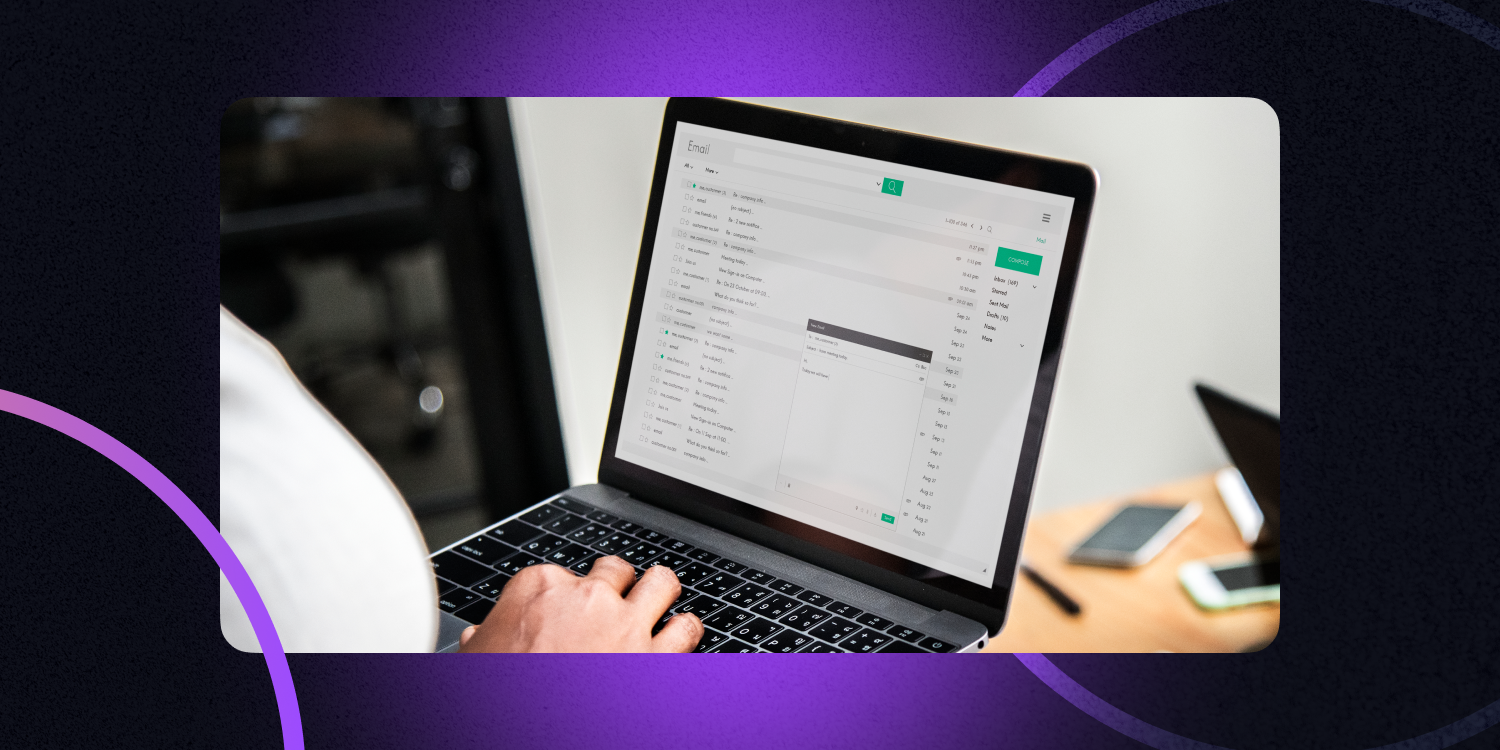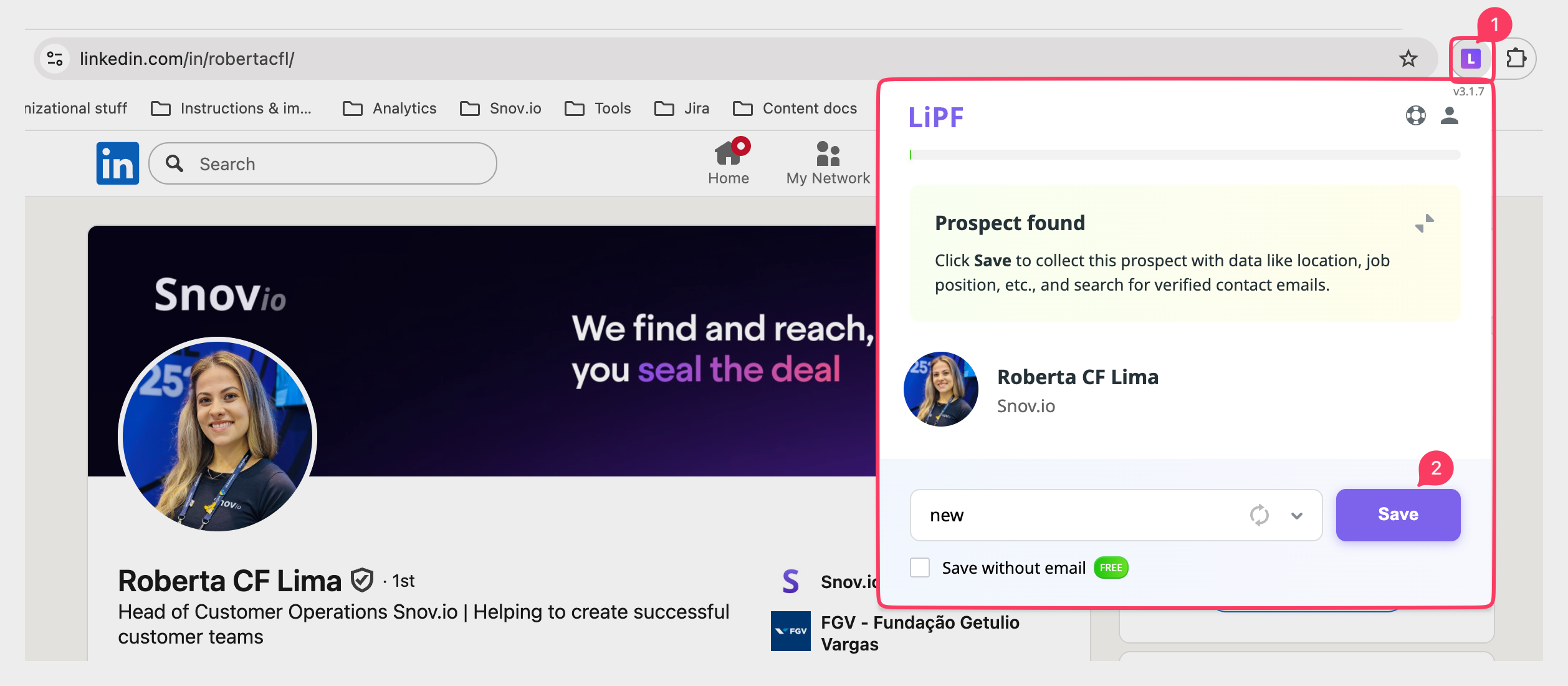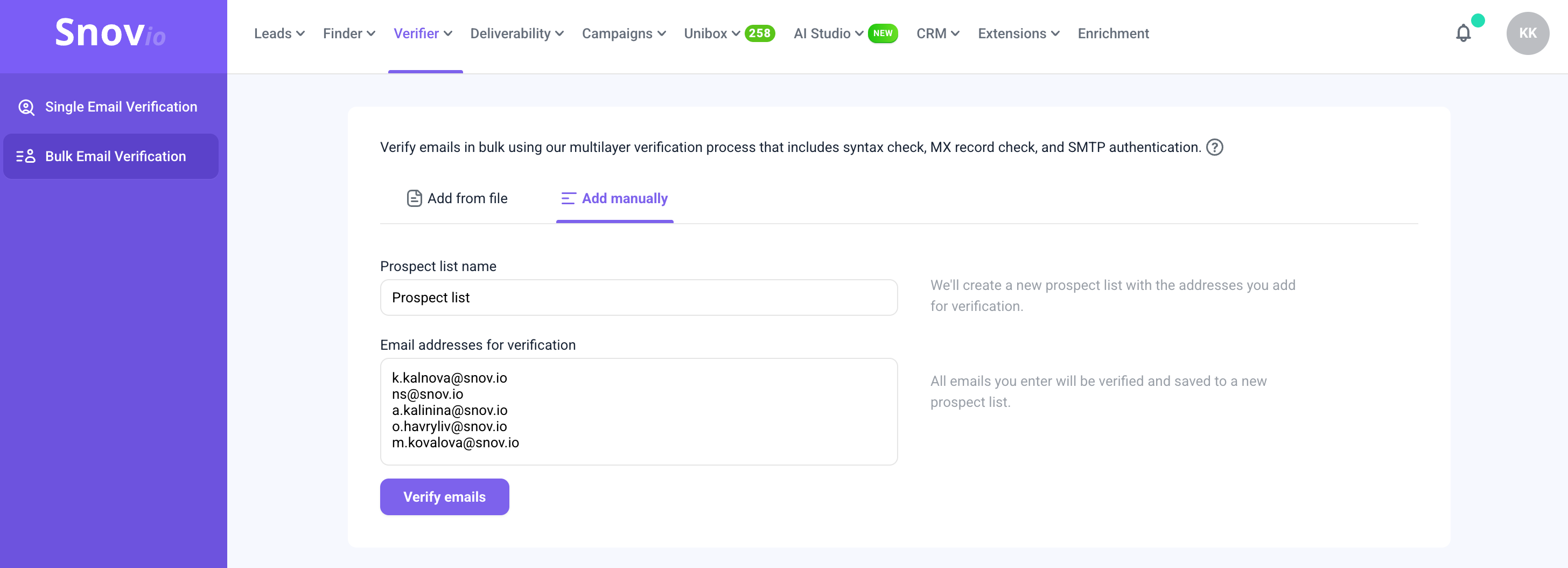TL;DR
Email validation is an essential step before sending any campaign. It helps you avoid high bounce rates, protect your sender reputation, and ensure your message reaches recipients’ inboxes. With more than 45% of campaigns ending up in spam, verifying emails is a must these days.
To check if an email address is valid, you can start with a basic syntax check, look up the domain, or search the address online for digital traces. For a faster and more reliable approach, use email verification tools like Snov.io.
What you’ll learn from this guide:
What is email validation?
Email verification, or email validation, is the process that lets you check if an email address is valid, properly structured, and currently active. Ideally, this practice should be an integral part of each campaign to prevent red flags with ESPs (email service providers).
The consequences of sending messages to invalid addresses go far beyond bounced rates and wasted budget. Over time, repeated failures to reach recipients signal to ESPs that your domain may not be trustworthy. This can harm your sender reputation, trigger spam filters, and ultimately reduce your overall deliverability.
|
💡 Expert recommendation If you’ve been sending campaigns to unverified contacts, your deliverability rate has most likely dropped already. If you notice any drop in key metrics, we strongly recommend running a deliverability test. It will help you diagnose issues with domain health and sender reputation and, most importantly, provide personalized suggestions on how to fix them. |
Now, let’s break down why you need to validate emails.
Why is email validation important?
Email validation isn’t a mere formality but a necessary measure before you hit send. Skip it, and your outreach performance will quickly decline.
Today, businesses all over the world understand the necessity of using email verification tools. They do proper email validation automatically, which helps:
Drive user engagement
Sending campaigns to inactive or invalid addresses can seriously skew your engagement metrics. Imagine this: when 20% of your list can’t receive emails, your open rates look terrible, even if everyone who gets your message actually reads it. This creates a false impression that your content isn’t resonating, when the real problem is that a chunk of your audience simply doesn’t exist.
That’s where a good email verification tool makes a real difference. It ensures you are reaching genuine, active contacts and gives you more accurate data to work with. With clear metrics, you can also better understand what content is performing well and when your audience is most engaged.
Improve email deliverability
When you send messages to inactive or invalid email addresses, they bounce back. This sets off spam filters and damages your credibility as a sender.
Once your reputation goes downhill, ESPs are more likely to redirect your messages straight to spam folders. In fact, as of 2023, roughly 45.6% of emails ended up in spam – not an outcome you want, do you? Email validation helps you reduce bounce rates by ensuring an up-to-date and clean email list. As a result, your deliverability rate remains stable, or even grows.
→ Feel free to check our free email deliverability guide packed with valuable tips on improving inbox placement.
Lower expenses
Every invalid contact on your list equals money thrown away on messages that will never reach their intended recipients.
Email verification tools act like a cost-cutting filter for your marketing budget, helping you eliminate wasteful spending on contacts that can’t generate returns.
How to check if an email address is valid?
We’ve put together five simple ways to help you verify emails without sending:
- Do a manual email syntax check
- Try a quick Google search
- Check if the domain exists
- Use email validation tools
- Verify emails in bulk with Snov.io
1. Do a manual email syntax check
You can start with a simple email syntax check to make sure the format of the address looks valid. There are a few obvious red flags you should watch for:
- Missing @ symbols
- Unusual spacing
- Suspicious-looking domain names
- Multiple @ symbols
- Consecutive dots
- Endings like “.con” instead of “.com”
These minor typos are more common than you’d expect, especially when people fill out forms quickly on mobile devices. Taking a few seconds to spot and fix these basic formatting issues can help you avoid bounces and protect your sender reputation right from the start.
Remember, a properly formatted email address usually includes three key parts:
username + “@” symbol + domain name
2. Try a quick Google search
To verify emails, consider running a simple Google search. This method is straightforward and requires no technical expertise.
So, what do you need to do? Just type the full address into the search bar using quotation marks. This helps Google look for that exact phrase.
If the email appears in the search results, you may see it linked to social media profiles, directories, online forums, or professional sites. Most real users leave some kind of digital trace.
So, if the same address shows up in several places, there is a good chance it belongs to someone who indeed uses it.
💡 Expert recommendation
If you spot a LinkedIn profile associated with the email, that is a strong indicator that it is real and active.
In that case, try using the LinkedIn Email Finder. It helps you verify the address directly from the profile and collect additional contact information in just a few clicks.
3. Check if the domain exists
Make sure the company or website associated with the address really exists and is still active. This is really important when you’re dealing with business emails. Companies sometimes change their domains, go out of business, or update how their messaging systems operate.
If the domain isn’t set up properly or if the website isn’t active, that’s usually a red flag. This means that this address probably won’t work.
Taking a moment to check this helps you avoid wasting time reaching out to outdated contacts or businesses that no longer exist.
4. Use free email verification tools
Leveraging an email verification tool is indeed the smartest and fastest way to check your contact data. It runs behind-the-scenes tests on autopilot to make sure your campaigns won’t bounce, so you don’t have to worry about any of the technical stuff.
But what is the best free email verification tool?
Well, today, you’ll find many of them on the web. Tools like Snov.io, Clearout, and Hunter.io provide instant verification forms directly on their landing pages.
Now, let me show you how you can easily do single email verification upon signing up to Snov.io.
- Head to the verification page.
- Type in the address you want to check into the field.
Click Verify email to get instant results.
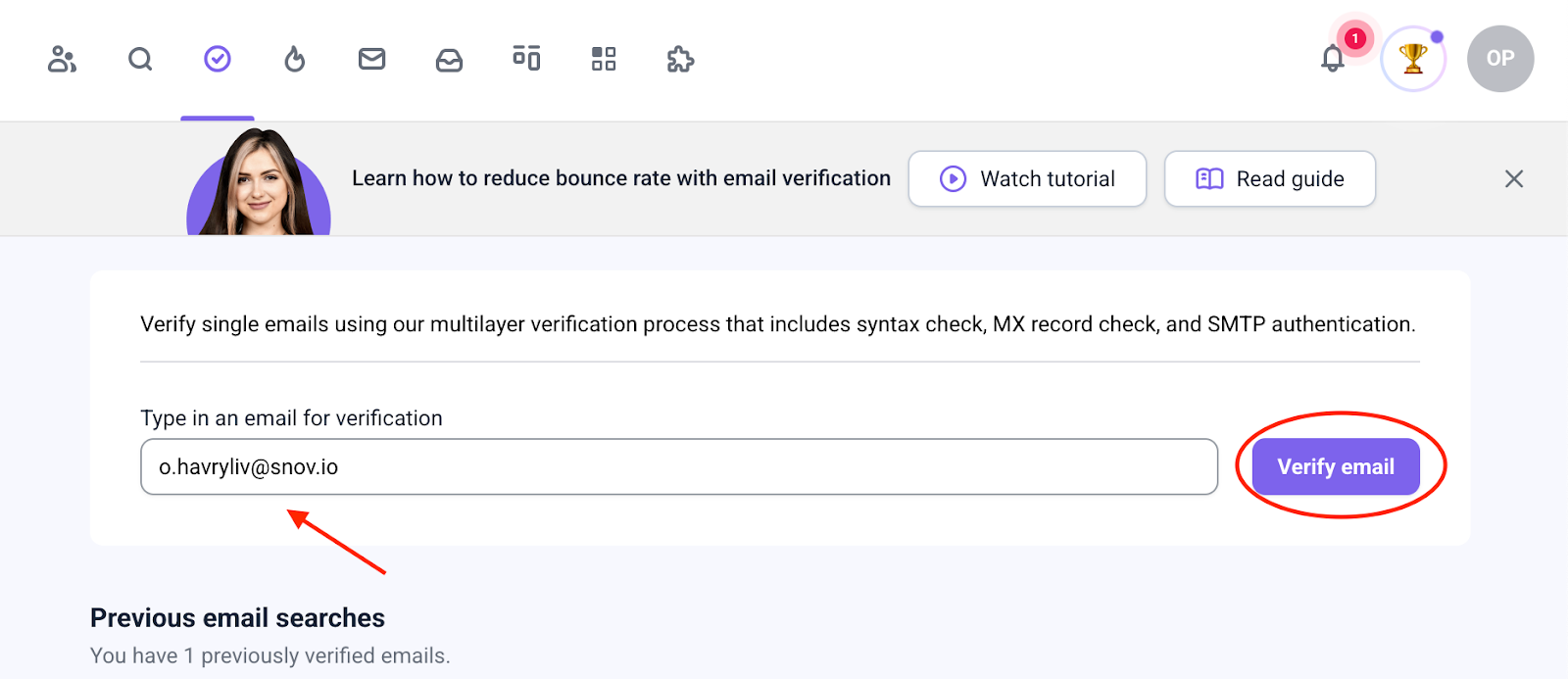
Results will have one of three possible statuses. Here is how to interpret them:
🟢 Valid: This address is active and ready to receive your messages.
🟡 Unverifiable: We couldn’t confirm this address with 100% certainty due to the domain’s settings. Use with caution.
🔴 Invalid: This contact is not valid, and sending to it will likely result in a bounce or no response.
As you can see, my address has been marked as valid:
Now that you’ve got a valid address, you can add it to your list and send them campaigns without worries.
After testing 90% of similar tools, I’ve concluded that Snov.io’s email verifier is the best on the market. You can be sure that if it’s verified (green), then it will hit the inbox.
Full-Cycle Sales Specialist at JetOctopus
Don’t want to verify each email address manually? Then, the next method is for you.
5. Verify emails in bulk with Snov.io
What if I told you that you don’t have to manually check each email address for validity? With the bulk email verification tool from Snov.io, you can get a quality contact list with almost no effort.
Go to the Bulk Email Verification page, click Choose file, and upload your list from your device.
The tool supports CSV, XLS, XLSX, and TXT file formats and can validate up to 100,000 addresses per search.
Alternatively, you can add addresses for bulk verification manually. Simply enter ones in the field, separating them with commas, semicolons, spaces, or line breaks. Then click Verify emails.
Now, let’s review what is the best way to check if an email address is valid.
Email validation best practices
At this final step, I’d like to share simple but actionable ways on how you can always keep your list clean, catching any addresses that slip through during your campaigns.
Verify emails at sign-up
Whether visitors find you through Google, social media, or word of mouth, using real-time email checks on your forms is a smart approach. When people submit their contact information, these forms help catch errors right away and prevent invalid addresses from getting to your list.
How does this verification work?
To complete an action like signing up for your newsletter or downloading content, users must address any email issues flagged by the form.
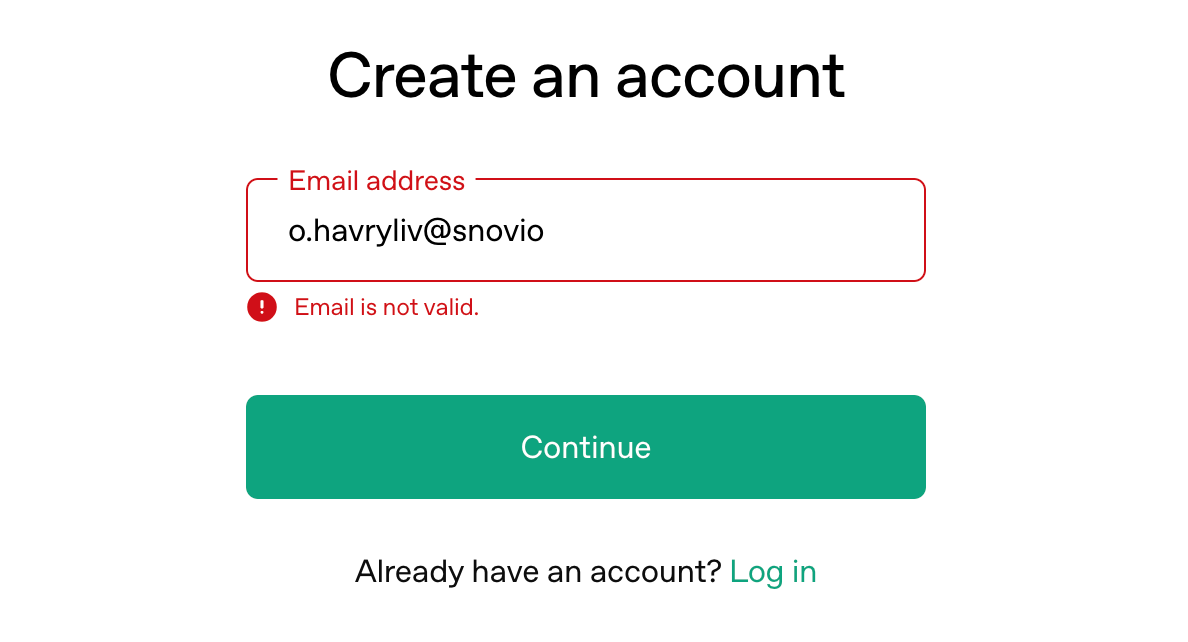
As a result, you won’t need to double-check those addresses later, making it easier to keep your list clean.
Use double opt-in confirmation
I recommend using double opt-in to make sure people enter valid addresses. Plus, this approach will provide an additional guarantee that subscribers truly want to hear from.
How does double opt-in work?
After someone signs up, they receive a confirmation email asking them to complete the process by clicking a link or entering a code. If they do not confirm, they will not be added to your list.
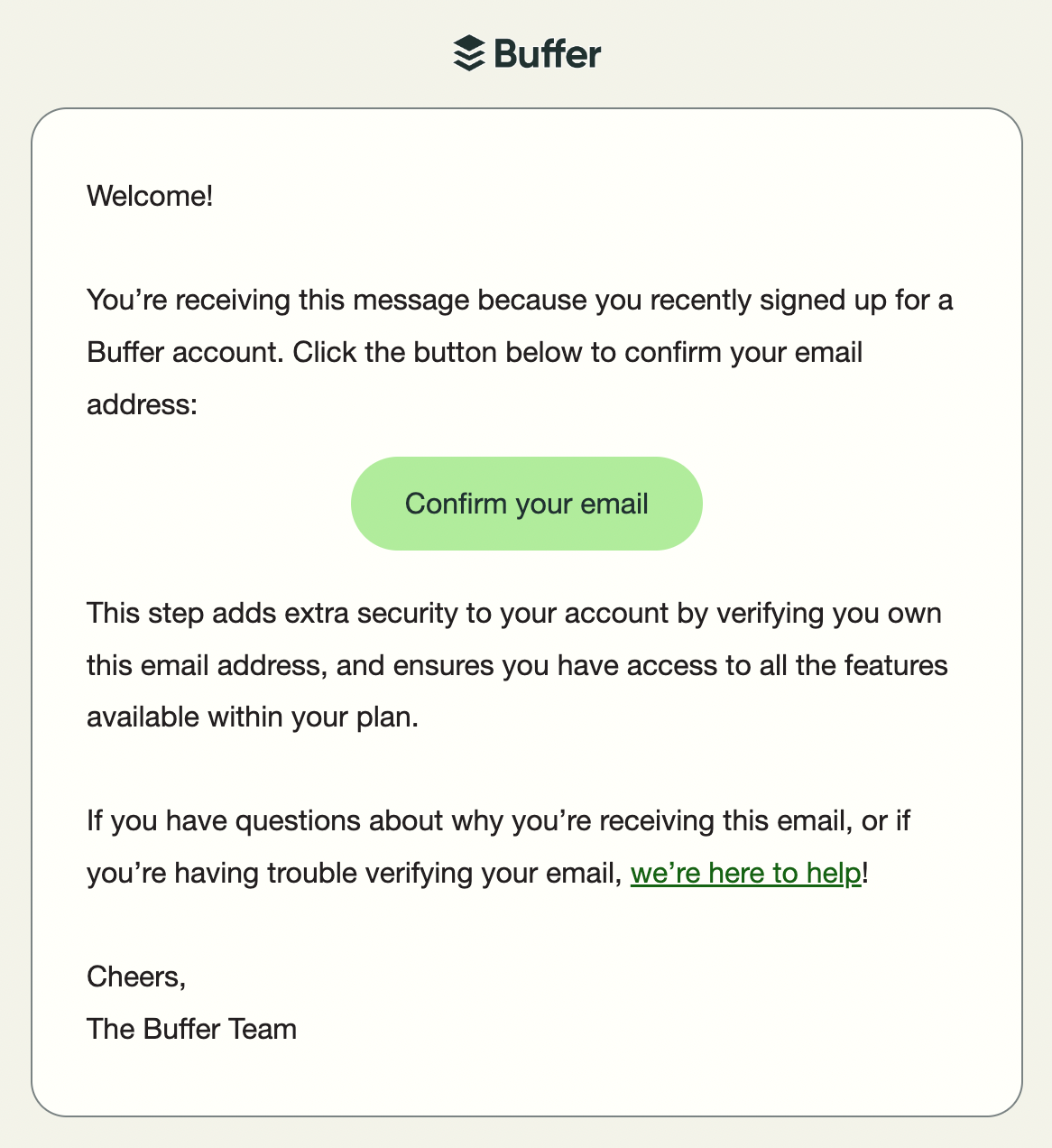
This extra step helps prevent fake, incorrect, or bot-submitted addresses from slipping in. It also ensures your list is filled with real people who are actually interested in your content. That leads to reduced bounce rates, fewer spam complaints, and better engagement.
Although you might end up with a slightly smaller list at first, the quality of your subscribers will be much higher. And that is what really matters in the long run.
Keep your email list up to date
Your contact list isn’t something you can set and forget. People change jobs, stop using old addresses, or simply lose interest. If you continue to send campaigns to outdated contacts, you’ll end up with more bounces, fewer opens, and a damaged sender reputation.
That’s why you should check in on your list regularly. Every few months is a good starting point. However, if you usually send bulk campaigns, doing it monthly can save you from bigger problems down the road.
How to check your list?
Start by removing addresses that consistently bounce or are never delivered. Say goodbye to people who haven’t engaged with your messages for a long time. Keeping your list clean helps make sure your campaigns land where they should — in front of the most relevant audience.
Monitor your campaign performance
By following this practice regularly, you’ll get valuable insights into the health of your contact list and campaign performance. For example, if your open rates start to drop or you notice more bounces than usual, it’s time you took a closer look at your contacts and outreach strategy.
With Snov.io, you can not only automate email campaigns but also easily check your stats. On the Campaigns page, you’ll see a summary of all your campaigns, including their status and key metrics. This overview helps you quickly understand how things are going and take immediate action if necessary.
Need more detailed information on a specific campaign? Visit its Statistics dashboard and analyze the results.
It displays essential numbers you should regularly track:
- Emails sent
- Deliverability rate of your campaign
- Engagement funnel
- Potential value of your campaign
- The number of unsubscribed recipients
- The amount of auto-replies
For example:

With a helpful chart below these metrics, you can see how your campaigns perform over time and spot trends for further improvement.
|
💡Expert recommendation Consider the following benchmarks that may signal you should tackle deliverability issues, check irrelevant contacts, and maintain list hygiene.
Check them regularly to keep your deliverability in check. |
Key takeaways
Email validation isn’t just a whim — it’s a critical step in every campaign. Knowing how to check if an email address is valid is an important step that can save you time and money. It helps keep your list clean, protects your sender reputation, and maintains high deliverability. By including verification in your marketing routine, you also ensure you are reaching the right people.
There are several ways to verify emails, such as performing a syntax check, confirming the domain’s existence, or searching for the address online. For the easiest and most reliable option, consider using tools like Snov.io, which can quickly perform both single and bulk verification automatically.
